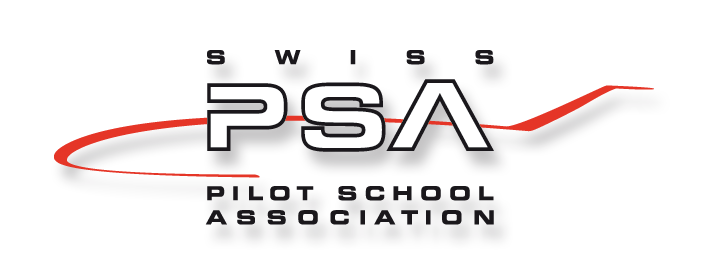Title Page
-
Subject of Change
-
Document Number
Aircraft (if applicable)
-
Conducted on
-
Conducted by
-
Location
-
Site conducted
-
Signed by
Identification of Change
-
Specify the change (i.e., in training programs, manuals, management, equipment, facilities, etc.)
-
Outline the objectives and expected outcomes of the change
Stakeholder Analysis
-
Identify key stakeholders, including aviation authorities, instructors, contractors, and staff
-
Who are the stakeholders involved?
-
Why is it not applicable?
-
Communicate with stakeholders to gather input and address concerns.
-
What are the inputs and concerns?
-
Why is it not applicable?
Regulatory Compliance Check
-
Ensure that the proposed changes comply with FOCA and EASA regulations
-
Will the change be compliant?
-
Why will it be not compliant?
-
Why is it not applicable?
-
Why is it not applicable?
-
Identify any additional certifications or approvals required
-
Are there any additional requirements?
-
What are these requirements?
-
Why is it not applicable?
-
Why is it not applicable?
Impact Assessment
-
Evaluate the impact of change (i.e., on SwissPSA, management, flight instructor workload, student learning, environment, site, etc.)
-
What are the impacts?
-
Why is it not applicable?
-
Assess potential impacts on safety and compliance
-
What is the outcome of this assessment?
-
Why is it not applicable?
Risk Assessment and Analysis
-
Identify potential risks associated with change (i.e., safety concerns, disruptions in training, regulatory issues, etc.)
-
Has the SwissPSA OMM ATT10 been applied in identifying the risks involved?
-
Why was it not applied?
-
Why is it not applicable?
-
Have new Risks, not listed in OMM ATT10, been identified?
-
Report the new Risk / Hazard via SwissPSA Hazard Identification Report (OMM ATT02)
-
Why is it not applicable?
-
What are the risks involved?
-
Why is it not applicable?
-
Assess the likelihood and severity of each risk (Refer to OMM 4.2.3 - 4.2.6)
-
What is the outcome of this assessment?
-
Why is it not applicable?
Risk Mitigation Strategies
-
The Risk Reduction Strategy is based on the concept of:
ACCEPTABLE – ELIMINATE – REDUCE – DECLINE (see attached diagram and refer to OMM 4.3.2) -
Apply the Risk Reduction Strategy to each identified Risk according to the Risk Tolerability Matrix (OMM 4.2.6)
-
Why is it not applicable?
-
Implement safety measures and protocols
-
Has the Fife-WHY model been used? (OMM ATT04)
-
Why was it not applied?
-
Why is it not applicable?
-
Has a Corrective Action Plan been defined? (OMM ATT05)
-
Why was it not applied?
-
Why is it not applicable?
-
What are the measures implemented / defined?
-
Develop contingency plans for unexpected disruptions.
-
Has a Corrective Action Plan been defined? (OMM ATT05)
-
Why was it not applied?
-
Why is it not applicable?
-
What are the contigencies defined?
-
Why is it not applicable?
-
Collaborate with aviation authorities to address regulatory concerns
-
Why is it not applicable?
Change Plan Development
-
Develop a detailed plan outlining the sequence of changes and their timeline
-
Why is it not applicable?
-
Allocate duties, resources, including training for instructors and staff
-
Why is it not applicable?
Communication Strategy
-
Develop a communication plan tailored to the SwissPSA community and other stakeholders
-
Why is it not applicable?
-
Provide regular updates to all stakeholders
-
Why is it not applicable?
Training and Development
-
Identify training needs related to new change
-
Which training needs have been identified and for whom?
-
Why is it not applicable?
-
Implement training programs to ensure compliance and proficiency
-
What is the training implemented?
-
Why is it not applicable?
Testing
-
Conduct tests to assess the implications of changes
-
Have the tests been successful?
-
Why is it not applicable?
-
Gather feedback and make necessary adjustments.
-
What is the feedback?
-
Are adjustments necessary?
-
Why is it not applicable?
Implementation
-
Execute the change plan, ensuring a phased and controlled approach
-
Why is it not required?
-
Monitor real-time progress and address any safety or operational issues promptly
-
Why is it not applicable?
Closure
-
Check that the outcome of change is as desired
-
Why?
-
Officially close the change initiative and acknowledge the collaborative efforts of those involved
-
Why is it not applicable?
-
Regularly evaluate and report on the performance of the changed processes
-
Why is it not applicable?
Summary of Management of Change (MOC)
-
Summary
Approval
-
Date and time of approval
-
Approver's signature















